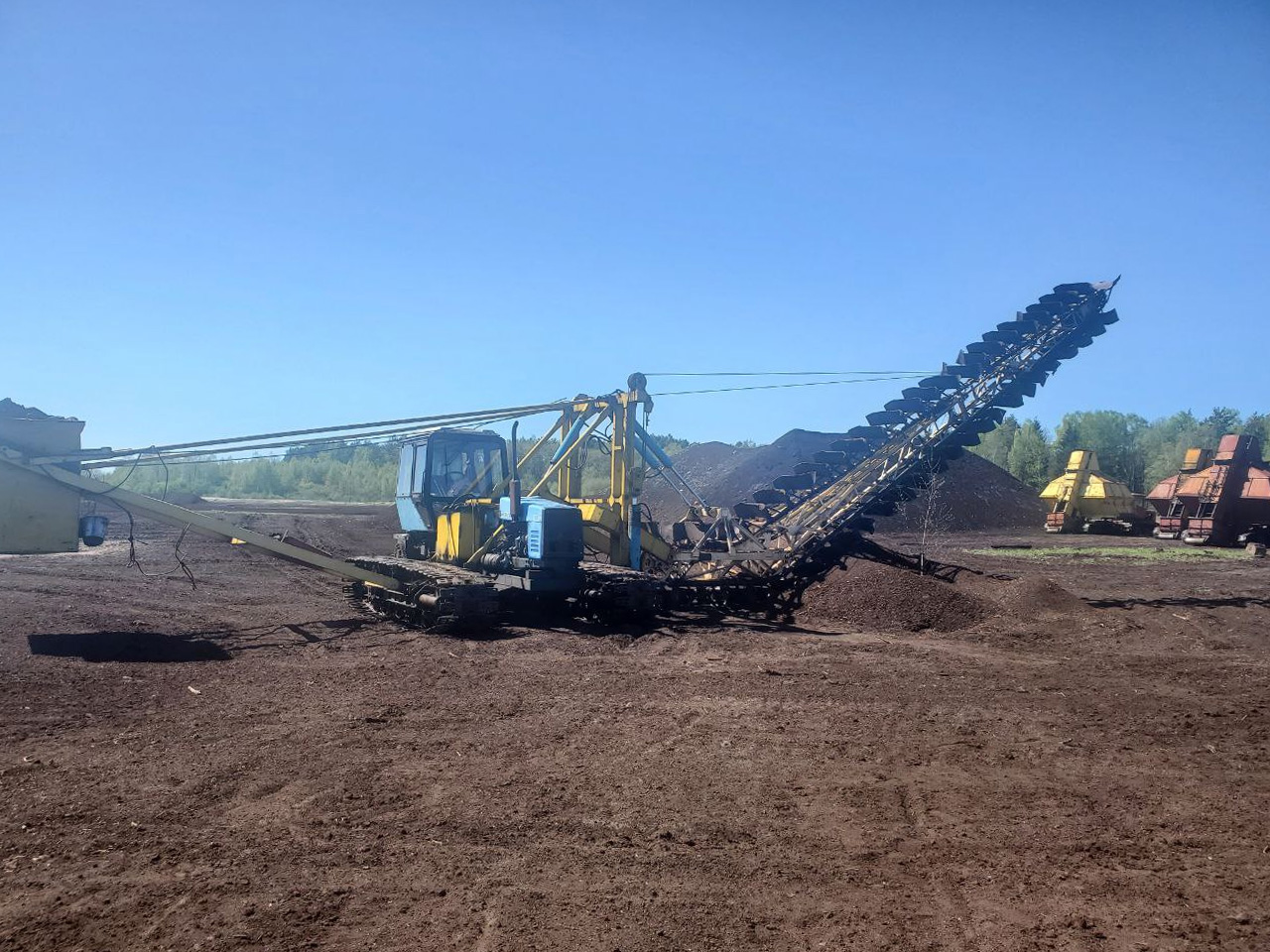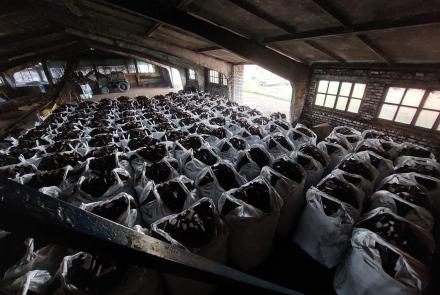Peat Mining
Volyn hosts the largest peat deposits in Ukraine, and the development of these peat fields requires a comprehensive approach that accounts for geological, technological, and environmental factors.
Approximately 81% of the peat extracted in Ukraine is used as fuel due to its high energy value, attributed to its significant carbon content.
The remaining 19% is utilized as peat mixtures in horticulture, as peat soil promotes robust root development for flowers, shrubs, agricultural crops, and ornamental trees.
Peat extraction is vital for the country’s economy and represents a step toward achieving Ukraine’s energy independence. In certain regions, peat briquettes serve as the primary source of fuel.
Peat deposits are classified into four types: lowland, transitional, mixed, and highland. Individual sections of peat fields may vary in age, extent, geological-geomorphological conditions, and hydrological characteristics. Consequently, extraction technologies may also differ.
The purpose of peat utilization varies as well: production of peat briquettes for communal and household needs, creation of composts, and use as peat soil.
Before developing peat fields, it is necessary to gather data on the thickness of peat deposits, hydrogeological conditions of the fields, and the quality characteristics of the resource.
Additionally, continuous radiation monitoring of the produced products is conducted.
The first stage of peat extraction is drainage. Before earthworks begin at the drainage site, preparatory activities are carried out: marking with stakes, planning channel routes, clearing stones, small stumps, and other objects, and verifying conditions for machinery access.
Next, a fire-prevention water supply system is established by constructing a network of drainage channels. Upon completion of extraction activities, the temporary cart channels are eliminated.
Excavators with wide tracks are used to dig channels in bogs where peat is extracted.
The wide tracks ensure the machine’s stability on unstable ground, while a specially designed bucket enables efficient earthworks. This is a critical stage in the peat extraction process, as properly constructed channels facilitate effective water drainage.
The milled extraction method, the most common approach, is a layer-by-layer surface process, as the peat deposit is worked in thin layers from the surface of the quarry in short cycles, which include the following processes:
- Milling of the top layer of the peat deposit;
- One to three rounds of turning;
- Windrowing of milled peat, which serves as the final drying operation and a preparatory step for harvesting;
- Stacking—collecting the finished product into stacks.
The product of the milled method—milled peat—consists of a mixture of fine particles of various shapes and sizes. Peat crumbs are obtained by milling the top layer of the peat deposit. The peat is loosened to a depth of up to 2 centimeters, after which the top layer is removed and turned into crumbs using a tractor equipped with specialized attachments. The loosened peat is dried in the sun and then gathered into windrows directly in the field. The collection of milled peat into stacks is carried out immediately after drying.













